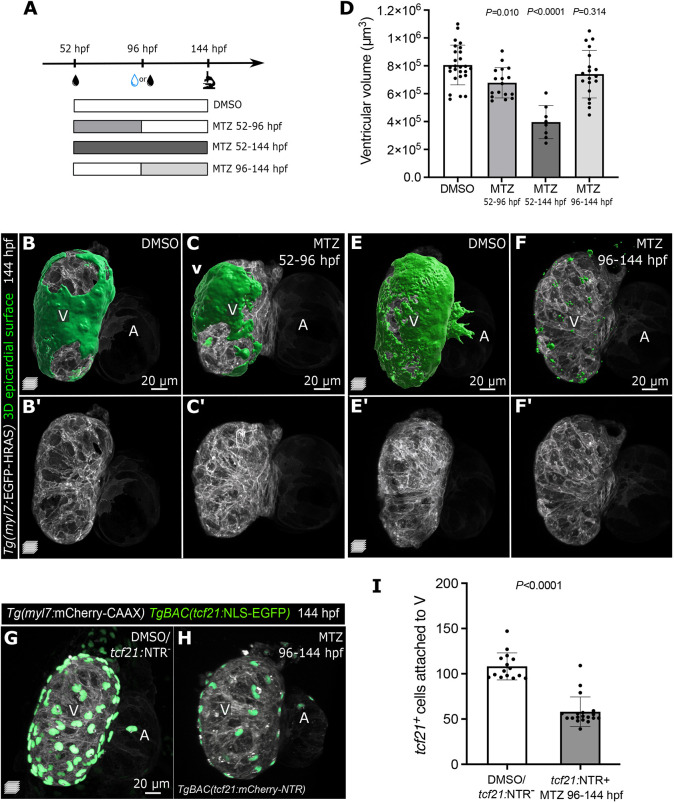Fig. 3.
Epicardial cells are required for ventricular cardiomyocyte growth during early cardiac morphogenesis, but are dispensable at later time points. (A) Schematic of the MTZ treatment protocol. (B-C′,E-F′) Confocal images of 144 hpf Tg(myl7: EGFP-HRAS); TgBAC(tcf21:mCherry-NTR) DMSO and MTZ-treated larvae. Green, 3D reconstruction of epicardial coverage showing a partial recovery of EpiCs in 52-96 hpf MTZ-treated larvae, and a clear reduction in 96-144 hpf MTZ-treated larvae. (D) Quantification of ventricular volume at 144 hpf following epicardial regeneration or late epicardial ablation. (G-I) Confocal images and quantification of 144 hpf Tg(myl7:mCherry-CAAX); TgBAC(tcf21:NLS-EGFP); TgBAC(tcf21:mCherry-NTR) DMSO and MTZ-treated larvae, showing the reduction of tcf21+ EpiCs attached to the ventricular myocardium after their late-onset ablation. Controls were pooled, including tcf21:NTR+ DMSO-treated and tcf21:NTR− MTZ-treated larvae (see Materials and Methods). Data show the mean±s.d. (D,I) and P-values are from one-way ANOVA with Dunnett's post hoc test (D) or unpaired two-tailed t-test (I). A, atrium; V, ventricle.

